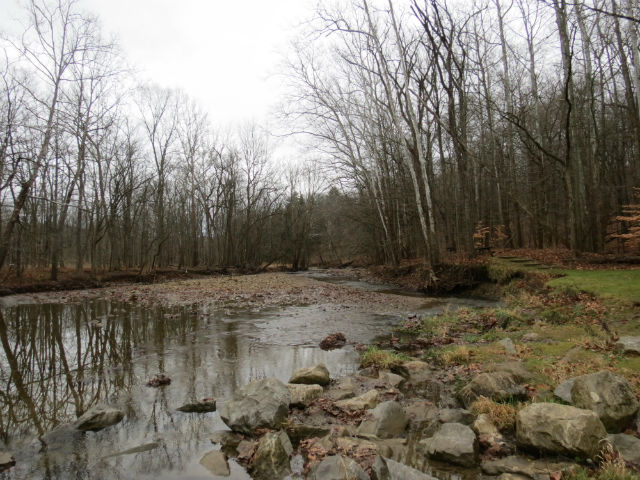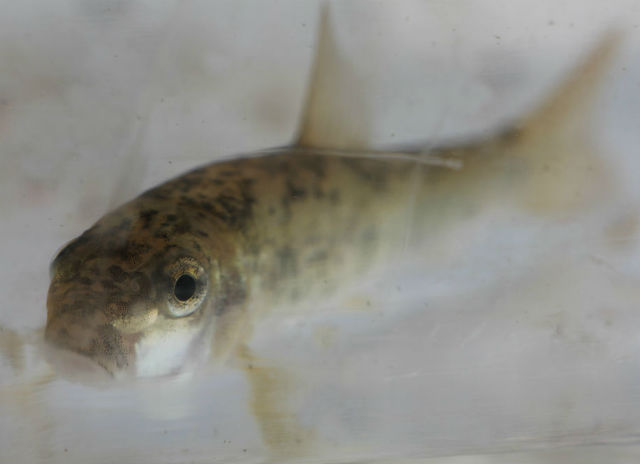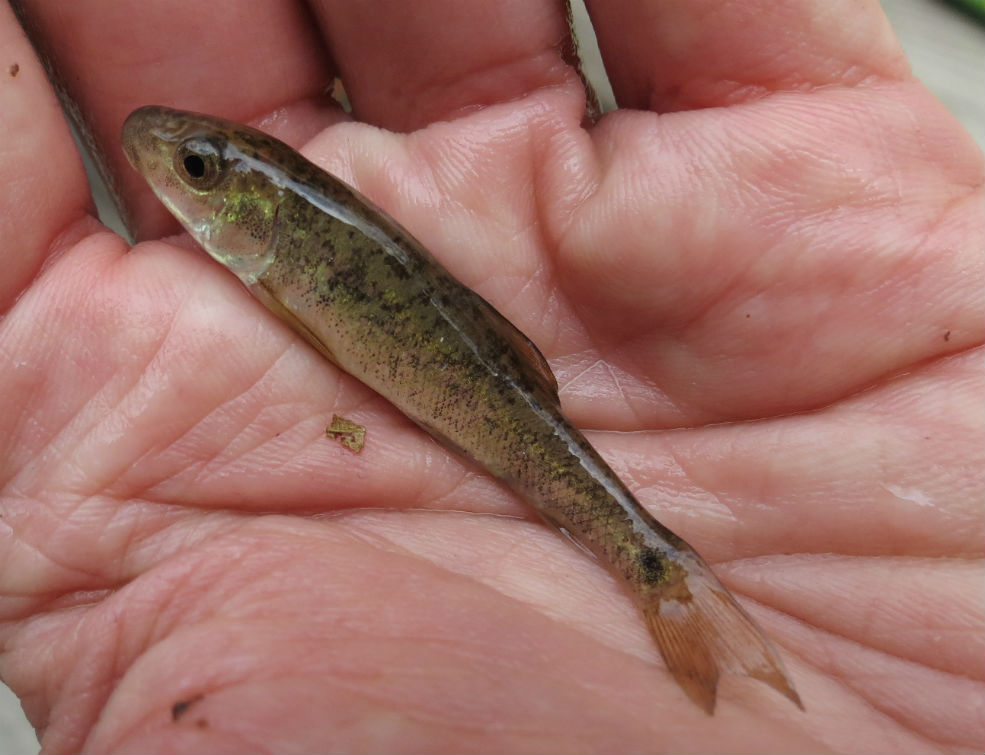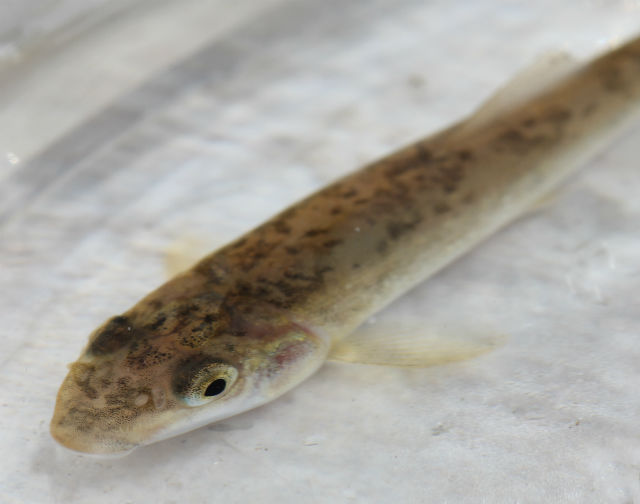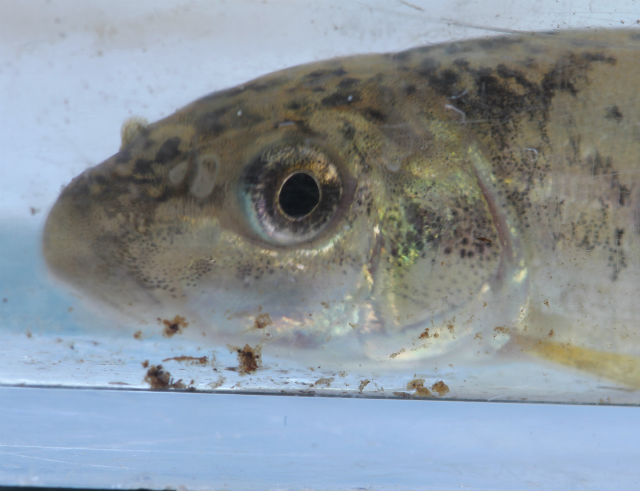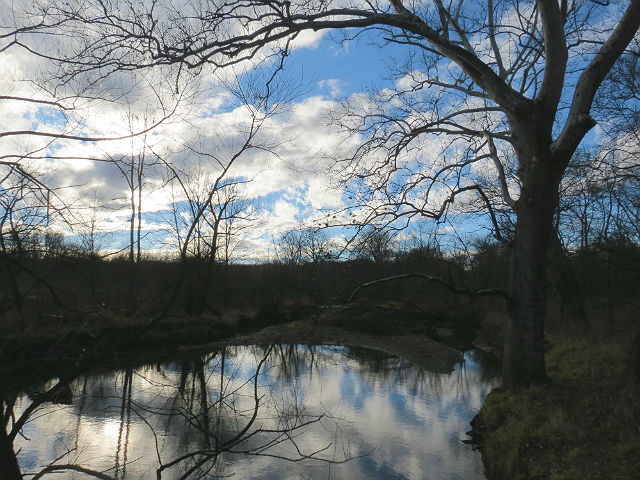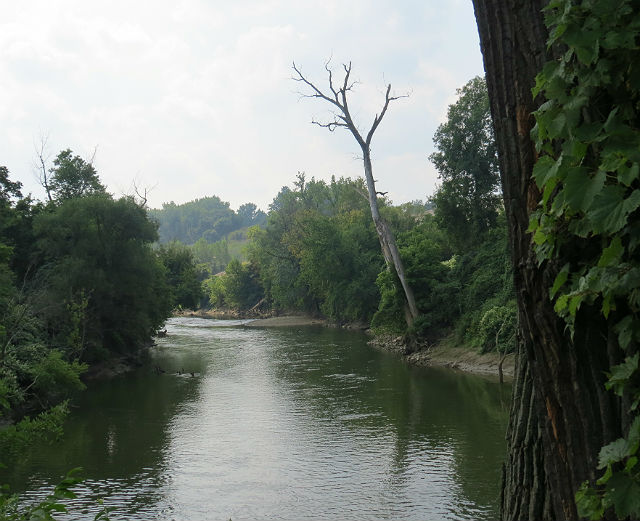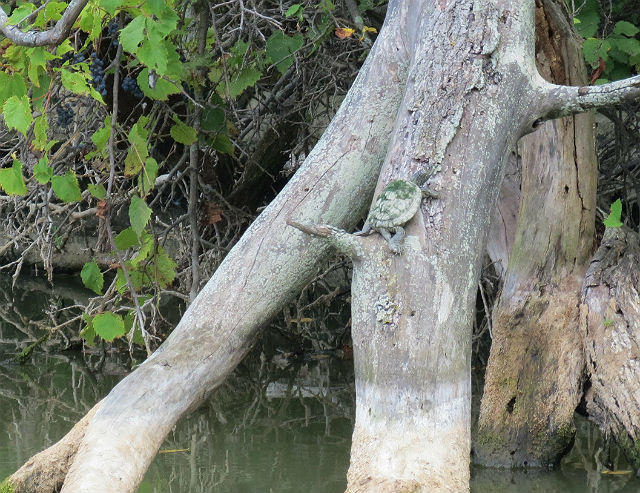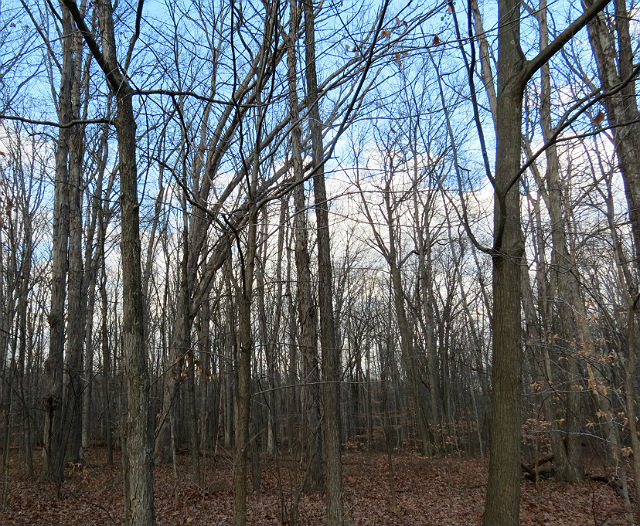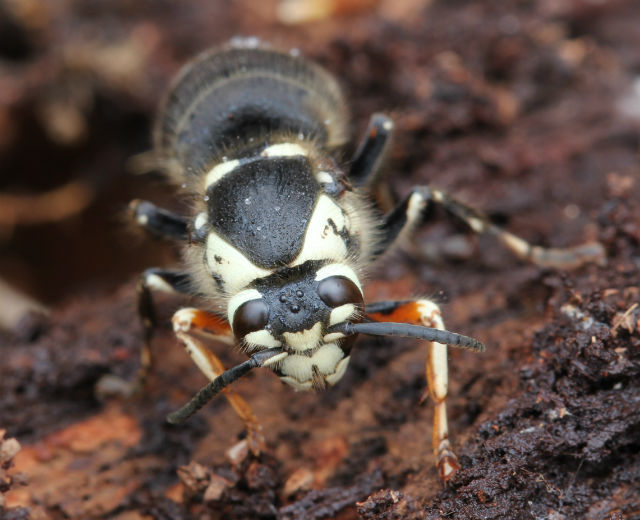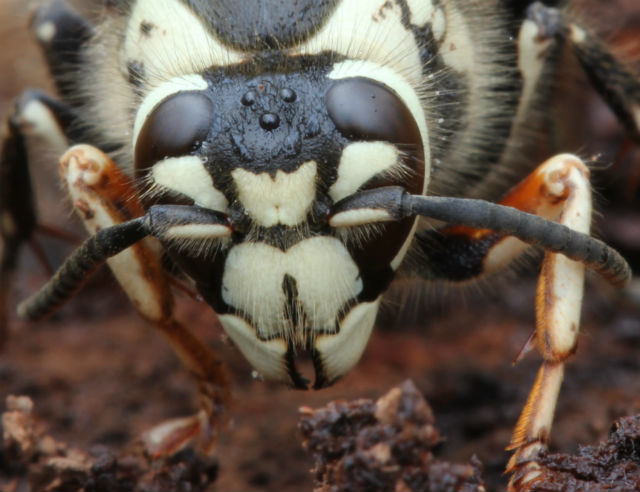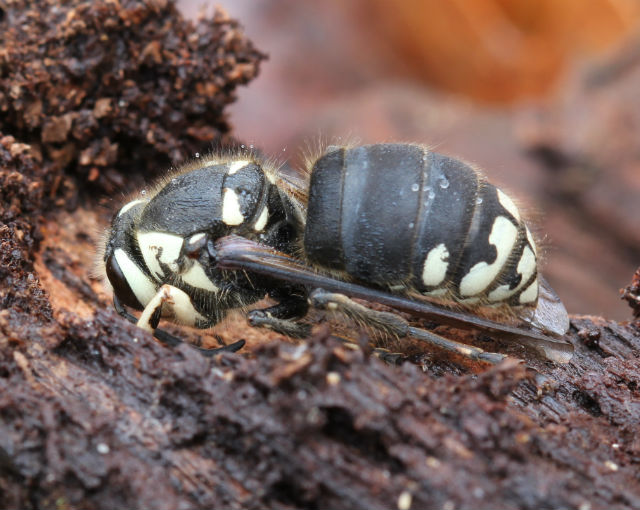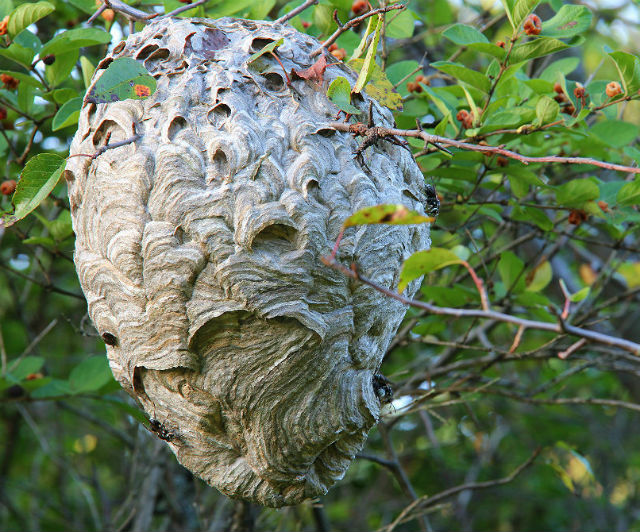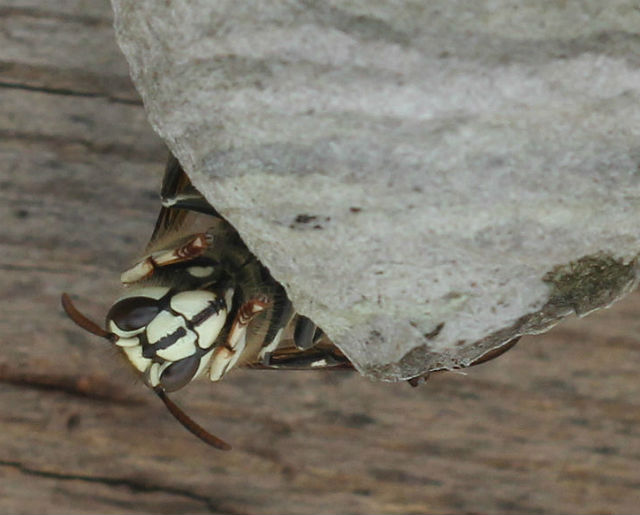After spending a bit of time exploring this creek, a caught a cool fish. The common name for this fish, “central stoneroller,” comes from the behavior of the male excavating a nest by moving gravel with its nose.
These are moderately stout, brownish colored minnows with small eyes and short, rounded fins. The snout is bluntly rounded and projects beyond their nearly horizontal mouth. Their mouth is white.
The Central Stoneroller is found throughout Ohio in moderate to high gradient streams with sand to gravel bottoms. They prefer riffle areas where riffles and pools alternate in rapid succession. Adults range in length from 3 to 5 inches, but they can reach 7 inches and males are generally larger than females.
They feed by scraping algae and and other organic matter from rocks and logs with the spade-like extension of their lower jaw. It is classified as a grazing minnow in its feeding behavior, and large schools of these fish often feed together.
The Central Stoneroller belongs to the Minnow and Carp family of fish. It goes by several other names: Dough Belly, Racehorse Chub, Rotgut Minnow, Steel-backed Chub, Stone Luger, Stoneroller, and Tallow-mouth Minnow.

